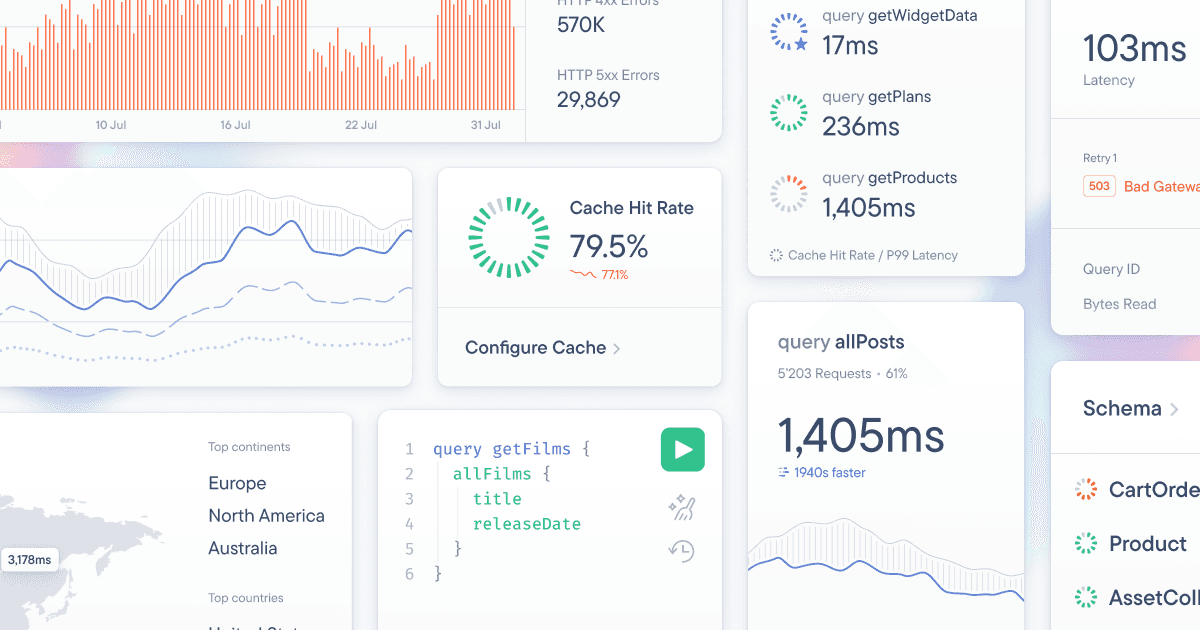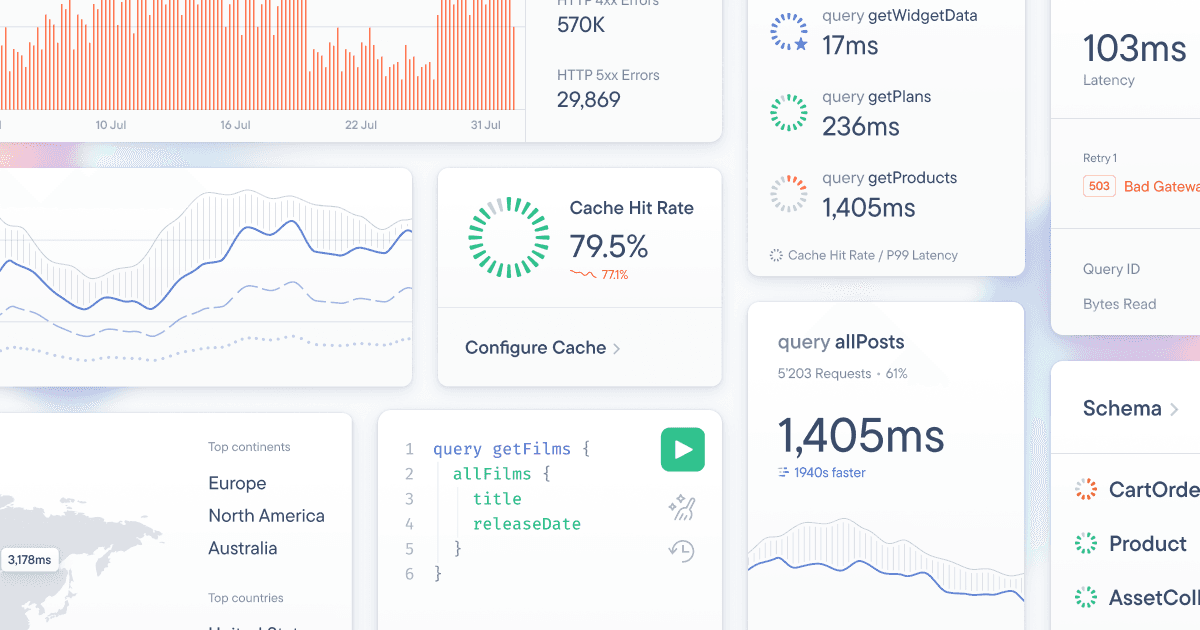
Last year, we announced our first product, GraphQL Edge Caching. We quickly realized that edge caching alone is difficult to use without observability into the traffic your GraphQL API gets, so we built very basic GraphQL analytics that gave our users just enough information to be able to configure their edge caching.
We’ve since started working towards our expansive vision of unlocking access to the world’s data by building the global data graph. The first step on that journey is for us to make open GraphQL APIs ubiquitous, which requires a bunch of tooling that helps people build & operate production-ready GraphQL APIs.
All of that upcoming tooling needed a new home, a home that scales.
The dashboard we had originally built for GraphQL edge caching limited us in what we could build. On top of that, after talking to hundreds of our users, we have learned so much about how we can help them operate their GraphQL APIs in production.
It was time for a major iteration.
Today, we’re excited to release the new Stellate dashboard for everyone!

Between all of the brand-new features and the major improvements across the entire platform, there’s a lot to dive into here, so we’re dedicating this week to talk about everything that’s new.
While we’re focused on announcing all of the changes this week, you already have access to the new dashboard today! If you’re not already a Stellate user, sign up for free and try out the new dashboard today. (psst, Stellate is completely free for developers!)
Tomorrow we will turn our attention to one of the big improvements within the new dashboard: our brand-new GraphQL Metrics. Join the discussion in our Discord community, fasten your seatbelt and get ready for our first-ever launch week! 🚀